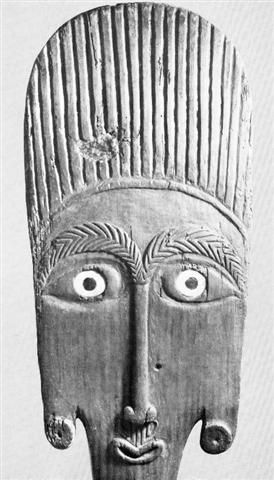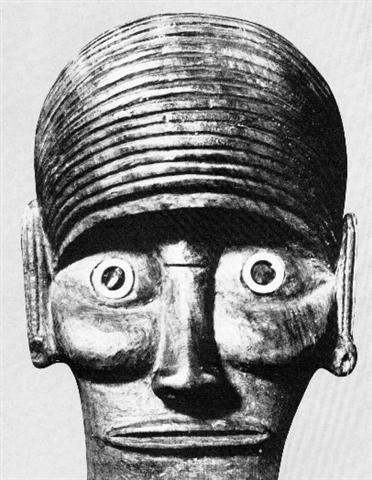3. There are two kinds of 'dance paddles', rapa and ao, agreeing in general shape and having a face at the top end, or to be more accurate - two equal faces, one on each side (like the double faces on a ua staff). The picture below shows an ao (large dance paddle):
(Ref. Heyerdahl 3) The forehead is visible and the 'hair' stands on its end (probably illustrating feathers or sun rays). I guess we here see high summer time expressed by visual cues. If we compare with the ua staff, we now can idenify winter signs of darkness:
The sky vault (the grooves) lies close to the ground and even the horizontal mouth is like a slit. The 'strongly projecting pouches' which hang down below the eyes are like moon crescents. The pupils are enlarged to let in as much light as possible. The nose is not as long as in the ao paddle and the face is compressed from above, resulting in pouches, while in the ao paddle the face is fully stretched out. The word rapa implies a flat surface, without wrinkles. If ua glyphs represent ua staffs, then they should occur in winter, not in summer. When it rains (Ża) sun is usually not seen. |

